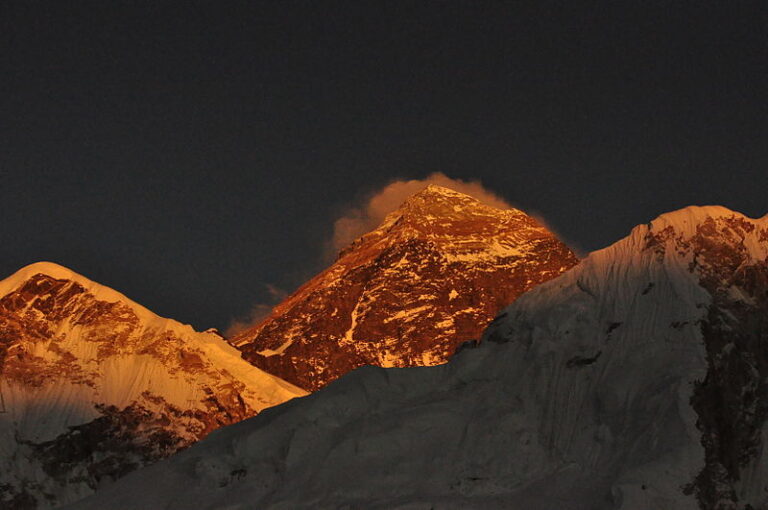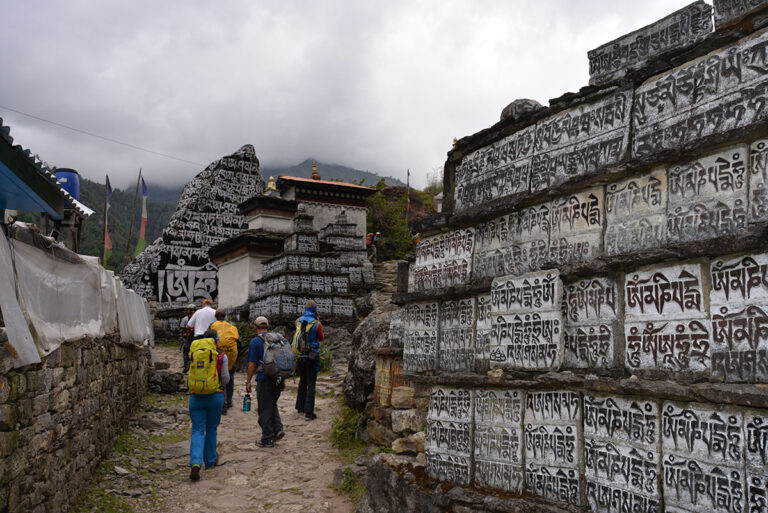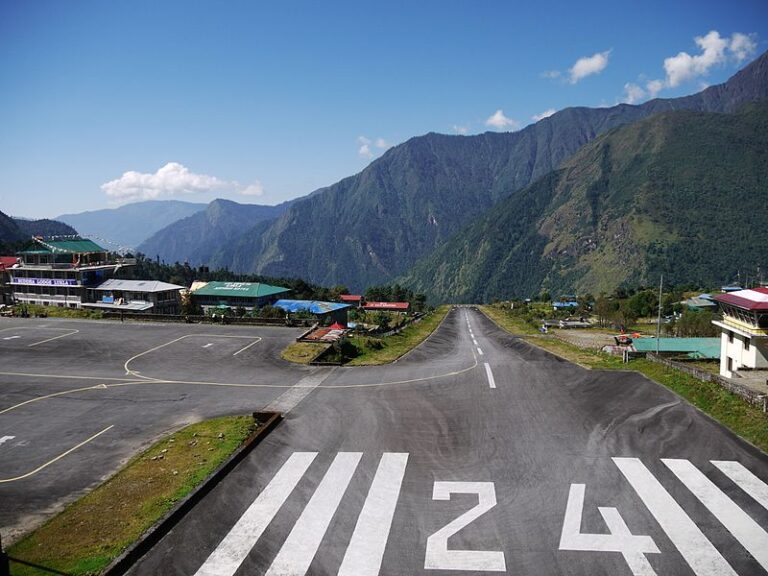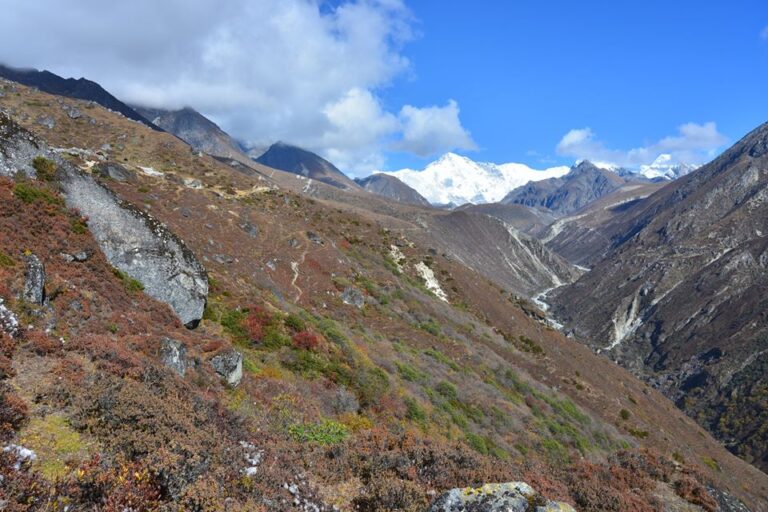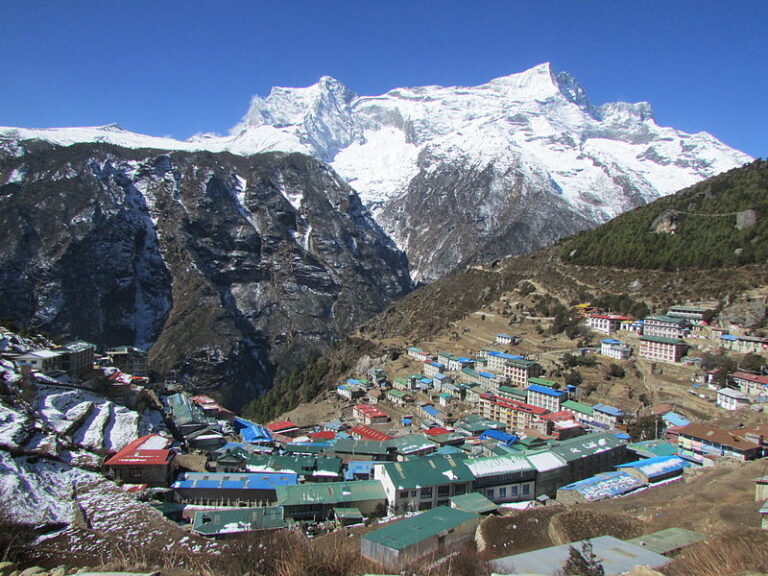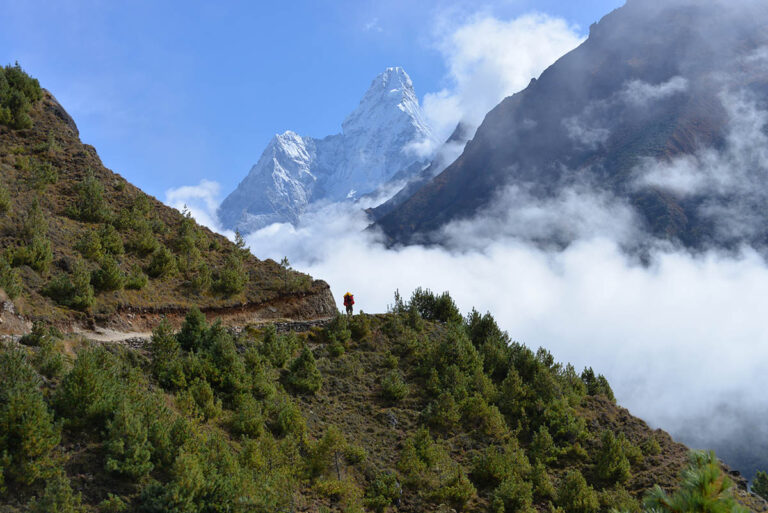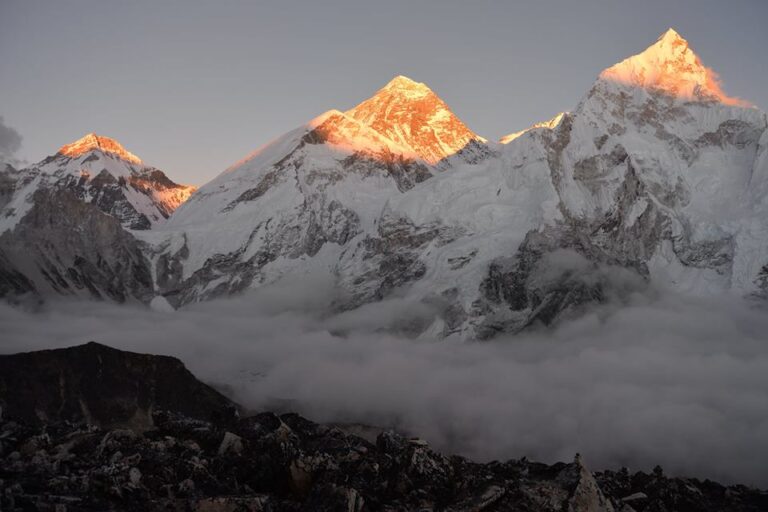Everest region has dozens of fascinating trekking destinations; which are possible to customize according to trekker’s time frame, physical fitness and interest. The Everest view trekking route is one of the easiest and shortest trekking route of Everest region that offers to see breathtaking view of mount Everest, Nuptse, Lhotse, Amadablam, Kongde, Thamserku, Taboche, Cholatse peak and its beautiful ranges.
Everest view trek would be one the best destination for those trekkers who have short holidays for Nepal but still willing to see panoramic view of high Himalayas including Mount Everest without getting high elevation. The trekking trail got name as Everest view trek due to a view point which is located just above the Namche bazaar and commands to the trekkers to see magnificent view of Thamserku, Taboche, Amadablam, Cholatse, Nuptse, Kongde peak and including some of the top ten mountains of the world known as Lhotse shar and mount Everest.
Everest view trek start from the Tenzing Hillary Lukla airport and after 3 to 4 days trek; trekkers get Everest view point. The trail leads pass by many villages called Chheplung, chaurikharka, Thadokoshi, Ghat, Phakding, Tok-Tok, Benkar, Monjo and jorsalle; which are inhabitant by the Sherpa people. Sherpa peoples are following the Buddhism so during the trekking period; trekkers get great chance to explore very old monasteries, stupa and mani walls which are well decorated with Buddhist Mantras.
The Meaning of OM MA NE PEDME HUM
The Buddhist mantra OM MA NE PEDME HUM is commonly carved onto rocks, known as mani stones, or else it written on paper which is instead into prayer wheels. when an individual spins the prayer wheels, it is said that the same as reciting the mantra as many times as it is duplicated within the wheel. it is said that all the teaching of the Buddha are contained in this mantra: OM MA NE PEDME HUM can not be translated into a simple phrases or sentences but still some of the Lama explained it as – (OM – God universe)(MA – People universe) (NE – Devil universe) (PE – Animal universe) (ME – Living being universe) and (Hum – Hell universe).
